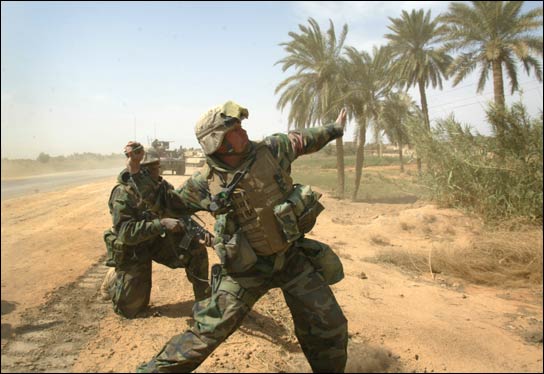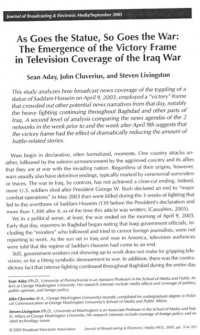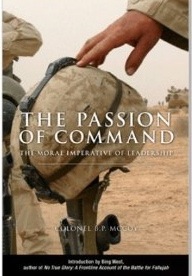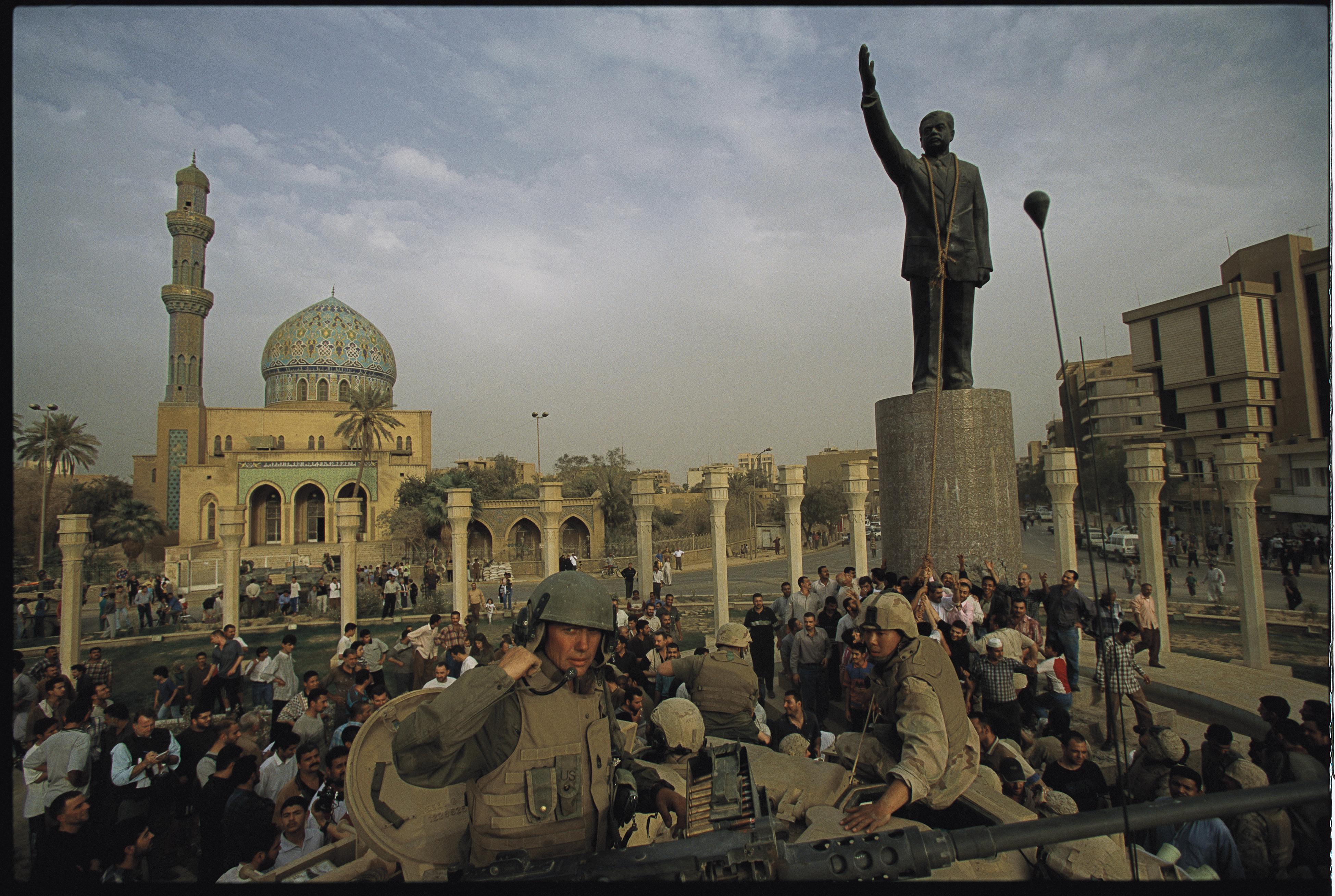Here’s a two-minute clip of Fox’s coverage of the statue being torn down.
Category: The Toppling
The Psychological Operations Myth
In 2004 the Army published a report that credited a psychological operations team with playing a crucial role at Firdos Square. A ...
The Grenade Picture

From my story…
McCoy, who has written a monograph on military leadership, “The Passion of Command,” understood the importance of the media. That was one reason he had agreed to let me and ten other unilateral journalists follow his battalion, which already had four embedded journalists. ...
The Map for Invading Baghdad
The final assault into central Baghdad was planned in a surprisingly ad-hoc manner. I had thought it would have been prepared in depth, with lots of intelligence and surveillance on hand, but instead it was devised on the outskirts of Baghdad, at the Diyala canal, by two majors, John Schaar ...
Journalists Outside the Frame
The hundreds of journalists at Firdos Square were rarely shown on TV or in photos; their influence on the toppling was obscured. But a Marine who was at Firdos shared with me a series of photos that show the journalist-saturated scene around the statue. The first two photos in the set ...
Academic Studies of the Firdos Toppling

There are a number of interesting media studies about the toppling at Firdos Square. The best was done by a George Washington University team led by professor Sean Aday; entitled “As Goes the Statue, So Goes the War: The Emergence of the Victory Frame in Television Coverage of the Iraq ...
My Other Stories About the Third Battalion
The military unit that toppled the statue of Saddam Hussein at Firdos Square was the Third Battalion Fourth Marines, based at Twentynine Palms, California and led by Lt. Col. Bryan McCoy (who is now a full colonel, based in Tampa with Central Command). During the invasion I was what the military called ...
ProPublica Video About the Toppling
My story about the toppling was helped along by two generous and wonderful non-profit institutions. Most of the research was conducted while I was a fellow at the Joan Shorenstein ...
The Passion of Command

Col. Bryan McCoy, who commanded the battalion that toppled the statue of Saddam Hussein in Baghdad, has written a fine book about military leadership. It’s called Passion of Command: The Moral Imperative of Leadership, and it has a lot of admirers in the military community.
The Toppling
On April 9, 2003, Lieutenant Colonel Bryan McCoy, commander of the 3rd Battalion 4th Marines, awoke at a military base captured from the Iraqis a few miles from the center of Baghdad, which was still held by the enemy. It had been twenty days since the invasion of Iraq began, and McCoy had some personal chores to take care of—washing his socks, for one. Afterward, he walked over to a group of marines under his command who were defacing a mural of Saddam Hussein. As I watched, he picked up a sledgehammer and struck a few blows himself. The men cheered. Then he began preparing for the serious business of the day: leading the battalion into the heart of the city. He expected a house-to-house brawl that would last several days.
On April 9, 2003, Lieutenant Colonel Bryan McCoy, commander of the 3rd Battalion 4th Marines, awoke at a military base captured from the Iraqis a few miles from the center of Baghdad, which was still held by the enemy. It had been twenty days since the invasion of Iraq began, and McCoy had some personal chores to take care of—washing his socks, for one. Afterward, he walked over to a group of marines under his command who were defacing a mural of Saddam Hussein. As I watched, he picked up a sledgehammer and struck a few blows himself. The men cheered. Then he began preparing for the serious business of the day: leading the battalion into the heart of the city. He expected a house-to-house brawl that would last several days.




